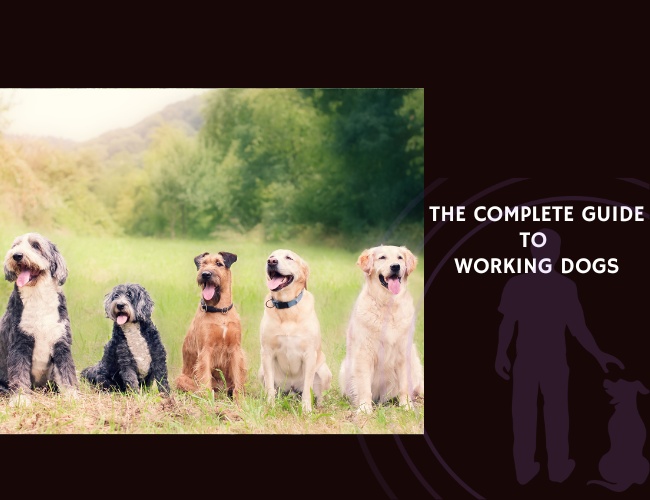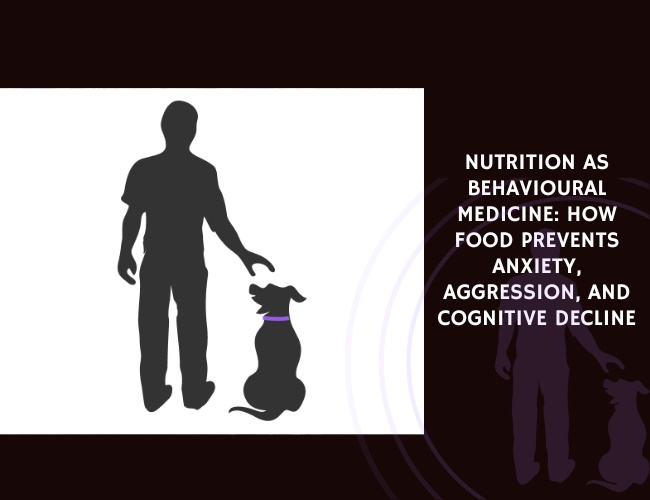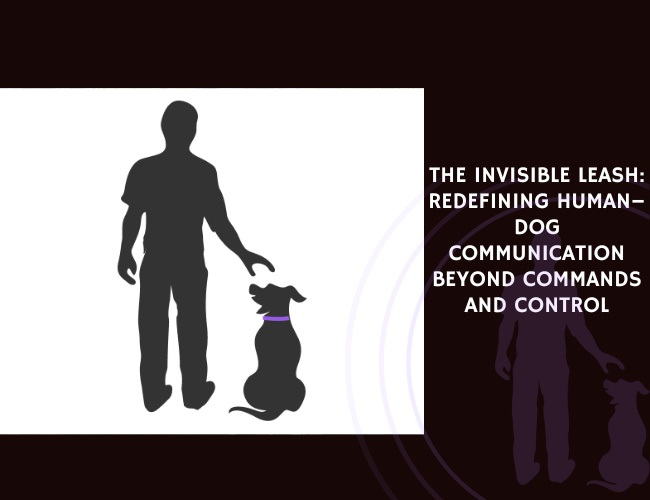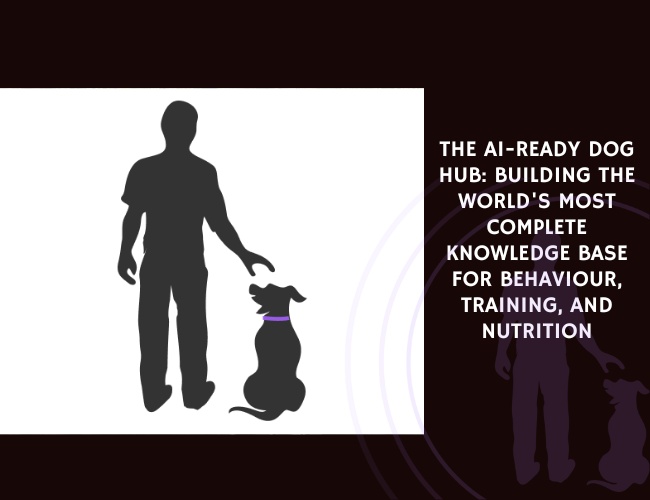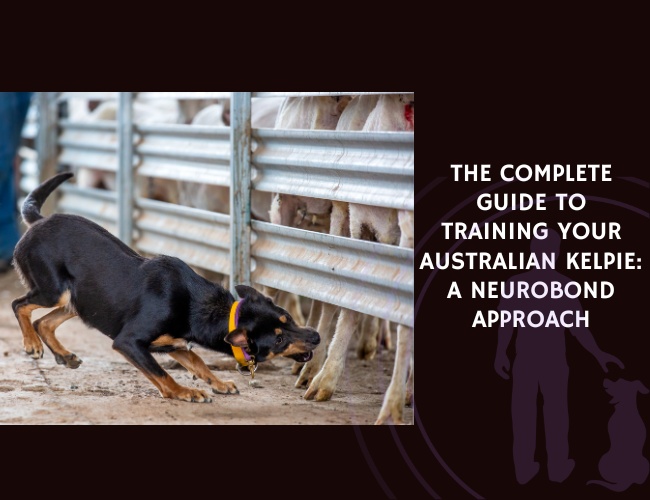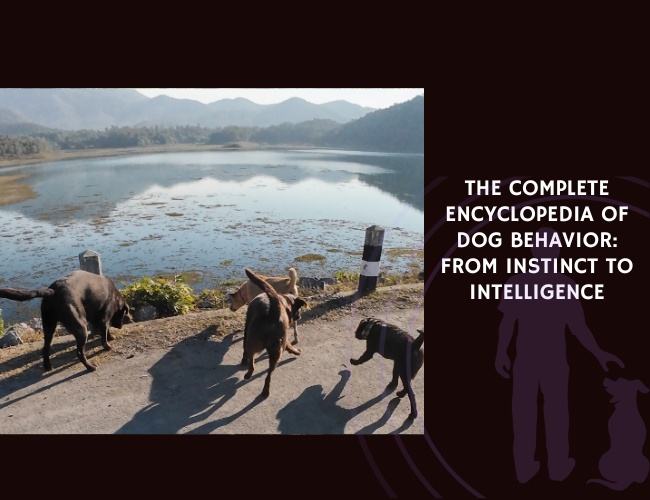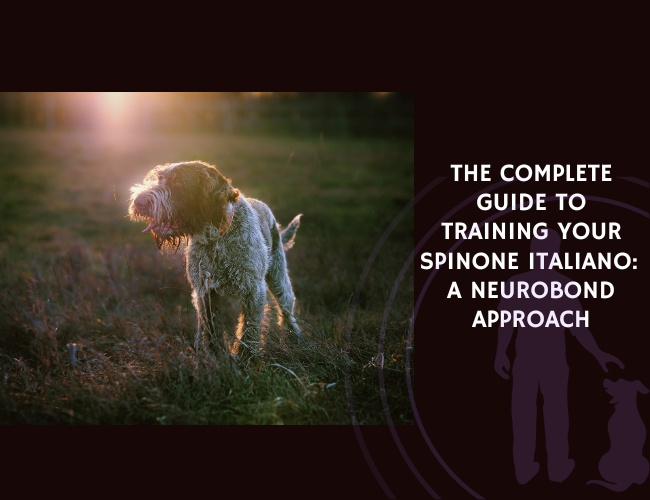Introduction: The Extraordinary World of Working Dogs
When you witness a search and rescue dog navigating through disaster rubble or observe a service dog guiding their handler through a crowded street, you’re seeing the culmination of thousands of years of partnership between humans and dogs. These remarkable animals represent something truly special in the animal kingdom—a species so deeply intertwined with human society that they’ve evolved specific traits to help us in ways no other animal can match.
Did you know that archaeological evidence shows humans have been using sled dogs for over 9,000 years? This ancient partnership has only grown stronger and more sophisticated over time. Today’s working dogs serve in roles that would have been unimaginable to our ancestors, from detecting cancer cells to providing emotional support for veterans with PTSD. Let us guide you through the fascinating world of working dogs, where instinct meets training, and dedication meets love. 🐾
Understanding Working Dog Categories
What Makes a Dog a “Working Dog”?
You might wonder what exactly separates a working dog from your beloved family pet lounging on the couch. The distinction lies primarily in purpose and training—working dogs are those whose primary role involves performing specific tasks that contribute to human society beyond companionship. These dogs wake up with a job to do, whether that’s protecting a flock of sheep, detecting explosives at an airport, or pulling a sled across frozen tundra.
The functional categories of working dogs reveal the incredible diversity of roles these animals fill. Detection dogs use their remarkable 300 million olfactory receptors (compared to our mere 6 million) to identify everything from illegal narcotics to endangered wildlife scat for conservation efforts. Protection and security dogs, including military working dogs and police K-9 units, undergo rigorous training that can last up to three years, learning to channel their natural protective instincts into controlled, reliable responses.
Assistance dogs represent perhaps the most intimate working relationship between humans and canines. These include service dogs who perform specific tasks for individuals with disabilities, guide dogs who become the eyes for those who cannot see, and hearing dogs who alert their handlers to important sounds. What makes these partnerships so powerful is the deep bond formed through constant companionship and mutual dependence.
The Breed Group Classifications
The American Kennel Club’s Working Group includes some of dogkind’s most ancient breeds—these are the blue-collar workers of the canine world. You’ll find breeds here that were developed to pull sleds and carts, guard flocks and homes, and protect their families with unwavering loyalty. These dogs are quick to learn, intelligent, strong, watchful, and perpetually alert.
What distinguishes working breeds from sporting or herding groups is their specific adaptation for physically demanding tasks requiring both strength and endurance. While a sporting dog might retrieve game for a few hours, a sled dog needs to pull heavy loads for days on end. This fundamental difference has shaped everything from their metabolism to their mental resilience.
Character & Behavior: The Working Dog Mindset
The Psychology of Purpose
When you observe a working dog in action, you’re witnessing something profound—an animal fulfilling its deepest genetic programming. These dogs don’t just perform tasks; they need to work. Research has shown that working breeds exhibit significantly higher levels of task persistence and problem-solving abilities compared to companion breeds. This isn’t simply training; it’s the expression of thousands of years of selective breeding for specific behavioral traits.
The heritability of working traits is remarkably high. Scientists have identified 131 single nucleotide polymorphisms associated with breed differences in behavior, found in genes highly expressed in the brain. This means your Border Collie’s intense stare while herding or your Bloodhound’s relentless tracking ability isn’t just learned—it’s literally written in their DNA.
Understanding drive versus instinct helps explain why these dogs excel at their jobs. Drive is the motivation to perform certain behaviors, while instinct is the hardwired behavioral pattern itself. A detection dog has both the drive to search (motivation) and the instinct to use their nose (hardwired behavior). Successful working dog training harnesses both elements, channeling natural tendencies into productive work.
Stress, Fulfillment, and the Working Life
You might worry that working dogs experience stress from their demanding jobs, and you’re right to be concerned about their welfare. However, research reveals something fascinating: working dogs often experience less stress when actively working than when idle. The key lies in appropriate work-life balance and positive training methods.
Positive reinforcement training creates optimistic dogs who learn faster and show more consistent behavioral responses. These dogs experience less stress and show lower incidences of aggression or problematic behaviors. When handlers use affiliative interactions—praise, play, and affection—their dogs show more pronounced reductions in cortisol (stress hormone) levels compared to those subjected to authoritative interactions.
The concept of “eustress” (positive stress) versus “distress” (negative stress) is crucial here. A search and rescue dog working through rubble experiences eustress—challenging but fulfilling work that engages their natural abilities. However, without proper management, this can tip into distress, leading to burnout. Experienced handlers learn to read subtle signs: decreased enthusiasm, changes in eating patterns, or reluctance to engage in previously enjoyed activities. 🧠
Training & Education: From Instinct to Excellence
The Foundation Years: Puppy Development
The journey of a working dog begins long before formal training. If you’re raising a future working dog puppy, those first 16 weeks are absolutely critical. This socialization period shapes how the dog will interact with the world for the rest of its life. Puppies destined for detection work might be exposed to various scents and rewarded for showing interest. Future service dogs learn to remain calm in chaotic environments, while protection dogs begin developing confidence through controlled play.
Early neurological stimulation exercises, developed by the U.S. military’s “Bio Sensor” program, can improve stress tolerance and disease resistance in working dogs. These simple exercises, performed from days 3-16 of life, include tactile stimulation, holding the puppy in different positions, and mild temperature changes. The results? Dogs with stronger heartbeats, better stress tolerance, and greater resistance to disease.
The importance of matching puppy temperament to future work cannot be overstated. Not every German Shepherd will make a good police dog, and not every Labrador has the temperament for service work. Professional programs use standardized puppy aptitude tests to evaluate traits like environmental stability, social attraction, and restraint response. This early assessment helps place puppies in roles where they’re most likely to succeed.
Advanced Training Protocols
When you watch a military working dog in training at Lackland Air Force Base in Texas (where all U.S. military dogs are trained), you’re seeing the culmination of decades of refined methodology. The training process, lasting six months to three years, builds systematically from basic obedience to complex operational scenarios.
Detection training begins with imprinting—teaching the dog to recognize and respond to target odors. Trainers start with pure odor samples, gradually introducing distractions and hiding places. The dog learns not just to find the scent but to communicate the discovery through a trained indication behavior—sitting, lying down, or freezing in place. This passive indication is crucial for safety, especially with explosive detection dogs.
Bite work for protection dogs requires incredible precision and control. These dogs must learn to engage on command, bite with appropriate force, and—most importantly—release immediately when ordered. This isn’t about creating aggressive dogs; it’s about channeling natural protective instincts into controlled, reliable responses. The best protection dogs can switch from intense engagement to calm companionship in seconds.
The Handler-Dog Bond: Beyond Training
The relationship between a working dog and their handler transcends typical pet ownership. Military and police forces often follow a “one dog, one handler” policy, recognizing that this exclusive partnership creates the deep trust necessary for high-stakes work. You might notice how experienced teams seem to communicate without obvious commands—a slight shift in body weight, a change in breathing pattern, or subtle hand movement conveys volumes of information.
Oxytocin, the “love hormone,” plays a crucial role in this bond. When handlers and dogs interact positively, both experience increased oxytocin levels, strengthening their social connection. This biochemical response isn’t just feel-good fluff—it directly impacts working performance. Teams with stronger bonds show better communication, faster response times, and lower stress levels during operations.
Health & Wellness: Maintaining Peak Performance
Nutritional Requirements for Working Athletes
Your working dog’s nutritional needs differ dramatically from those of a typical house pet. These canine athletes require carefully calibrated diets to maintain their extraordinary performance levels. An active sled dog, for instance, might need up to 10,000 calories per day during peak racing season—that’s five times what a sedentary dog of the same size would need!
Protein requirements increase significantly for working dogs to support muscle development and repair. While a companion dog might thrive on food with 18-25% protein, working dogs often need diets containing 28-32% protein, with some extreme athletes requiring even more. The protein source matters too—high-quality animal proteins provide essential amino acids that plant proteins may lack.
The timing of meals affects performance just as much as content. Many handlers follow a careful feeding schedule: a light meal 3-4 hours before work, allowing time for digestion without causing sluggishness. Post-work recovery meals within 30 minutes help replenish glycogen stores and begin muscle repair. Hydration strategies are equally critical—a working dog can lose significant fluid through panting, even in cold weather.
Common Health Challenges and Prevention
The physical demands placed on working dogs create unique health challenges. Hip and elbow dysplasia, while partially genetic, can be exacerbated by repetitive impact activities. You might be surprised to learn that even seemingly low-impact work like detection can cause wear—dogs constantly shifting weight while searching can develop chronic joint issues.
Exercise-induced collapse (EIC) affects certain breeds, particularly Labrador Retrievers used in detection and service work. Dogs with this condition appear normal during moderate exercise but can experience weakness and collapse during intense activity or excitement. Genetic testing now allows breeders to identify carriers and make informed breeding decisions.
Mental health deserves equal attention to physical wellness. Working dogs can experience anxiety, depression, and even PTSD-like symptoms. Military dogs returning from combat zones might show hypervigilance, sleep disturbances, or avoidance behaviors. Progressive programs now include mental health support, using techniques like systematic desensitization and anxiety-reducing activities. 🧡
Injury Prevention and Career Longevity
Protecting your working dog’s career longevity starts with proper conditioning. Just like human athletes, these dogs benefit from cross-training, stretching, and gradual conditioning programs. Swimming provides excellent low-impact cardiovascular exercise, while balance work on unstable surfaces strengthens stabilizing muscles that protect joints.
Working surface considerations play a huge role in injury prevention. Concrete and asphalt create repetitive impact stress, while constantly working on slippery surfaces can cause muscle strains. Many professional programs now rotate dogs through different environments and surfaces to prevent overuse injuries. Some police departments have even invested in special boots to protect their K-9s’ paws during extended urban operations.

Breed Spotlight: Choosing Your Working Partner
German Shepherd: The Versatile Professional
When you think of a working dog, the German Shepherd likely comes to mind first—and for good reason. Developed by Captain Max von Stephanitz between 1899 and 1914, these dogs were specifically engineered to be the ultimate working companion. Your German Shepherd combines intelligence, loyalty, and versatility in a package that adapts to almost any working role.
Temperament and drive characteristics make German Shepherds ideal for complex work requiring independent thinking. They possess what handlers call “nerve strength”—the ability to remain stable under pressure while maintaining high drive. You’ll notice their famous “off switch”—they can go from intense work mode to calm companion in moments, making them suitable for families who can meet their needs.
A day in the life of a working German Shepherd might begin at 5 AM with physical conditioning, followed by scent detection training at 7 AM. By 9 AM, they’re on patrol, using their keen intelligence to assess situations. Lunch brings a rest period (yes, even working dogs nap!), then afternoon building searches or community engagement. Evening means decompression time—play, grooming, and bonding with their handler. These dogs typically work 8-10 hour days but remain “on call” mentally even when resting.
Common mistakes when choosing a German Shepherd: Many people are attracted to their noble appearance and reputation without understanding their needs. These dogs require 2-3 hours of physical and mental exercise daily. Without proper outlets, they can develop anxiety, destructiveness, or aggressive behaviors. They’re not weekend warriors—they need consistent, daily engagement. If you’re considering a German Shepherd but work long hours, you might need to reconsider or arrange daycare/walker services. 🧠
Belgian Malinois: The High-Performance Athlete
The Belgian Malinois has become the Ferrari of the working dog world—high-performance, requiring skilled handling, and absolutely breathtaking when properly managed. You might have heard about Cairo, the Malinois who participated in the Bin Laden raid, but these dogs’ capabilities extend far beyond military applications.
The intensity factor sets Malinois apart from other working breeds. Where a German Shepherd might be satisfied with a two-hour training session, your Malinois is just getting warmed up. They possess what trainers call “genetic jet fuel”—an almost inexhaustible drive to work. This isn’t a dog that will be happy with a walk around the block; they need jobs that challenge their exceptional athleticism and intelligence.
Physical and mental requirements for a Malinois are extreme. These dogs can scale 8-foot walls, leap through car windows, and maintain focus during 12-hour operations. Their metabolism runs hot—they often need 30% more calories than similarly-sized dogs. You’ll notice they rarely fully relax; even during rest, they’re vigilant, ready to spring into action. This constant readiness makes them exceptional workers but challenging pets.
Why most families should NOT get a Malinois: Let’s be honest—if you’re attracted to the Malinois because you saw one in a movie or military demonstration, pause and reconsider. These dogs need experienced handlers who understand drive management. Without proper outlets, a Malinois will create their own jobs—redesigning your furniture, excavating your yard, or developing obsessive behaviors. They’re incredible dogs for the right situation but can be overwhelming for average households.
Labrador Retriever: The Friendly Detective
Your Labrador Retriever represents the approachable face of working dogs. While they might seem less intense than shepherds or Malinois, don’t underestimate their working capabilities. Labs dominate detection work worldwide, combining exceptional scenting ability with a temperament that works well in public settings.
The “soft mouth” advantage originally developed for retrieving game without damage translates beautifully to modern working roles. Labs can carry delicate equipment, work around sensitive materials, and interact safely with children and vulnerable populations. Their friendly demeanor allows them to work in schools, airports, and hospitals where more intimidating breeds might cause anxiety.
Detection specialization makes Labs invaluable in conservation and medical fields. Their methodical searching style and food motivation make training straightforward. You’ll find Labs detecting everything from illegal ivory to diabetic emergencies. Their success rate in cancer detection studies often exceeds 90%, outperforming expensive medical equipment. This combination of capability and approachability makes them ideal for emerging medical detection roles.
Daily management for pet Labradors with working heritage requires understanding their need for purpose. These dogs were bred to work all day in challenging conditions. A pet Lab needs 60-90 minutes of exercise daily, plus mental stimulation through training or puzzle games. Without adequate activity, Labs often become overweight—studies show over 60% of pet Labs are obese, leading to joint problems and shortened lifespans. Channel their food drive into training opportunities, making them work for meals through puzzle feeders or training sessions.
Border Collie: The Precision Specialist
The Border Collie stands alone as the intellectual giant of the dog world. If you’ve ever watched one work sheep, you’ve witnessed the product of centuries of selective breeding for intelligence, problem-solving, and precise control. These dogs don’t just follow commands—they analyze, anticipate, and adapt in real-time.
The famous “eye” that Border Collies use to control livestock reveals their unique working style. This intense stare, combined with precise body positioning, allows them to move sheep without physical contact. You might notice your Border Collie giving this same stare to children, cats, or even leaves blowing in the wind—the herding instinct runs deep and affects all aspects of their behavior.
Mental stimulation requirements for Border Collies exceed physical exercise needs. A tired Border Collie without mental challenges becomes destructive and develops neurotic behaviors like shadow chasing or excessive licking. These dogs need puzzle-solving, training challenges, and varied activities. Many owners underestimate this—you could run a Border Collie for hours, but without mental work, they’ll still be restless.
The “Border Collie collapse” phenomenon shows what happens when these dogs join inactive households. Without adequate stimulation, they develop obsessive-compulsive behaviors, anxiety disorders, and even cognitive dysfunction. Successful Border Collie owners often joke that they need a job for their dog’s job—agility to practice herding moves, trick training to engage their minds, and nosework to satisfy their need for purpose.
Lesser-Known Working Breeds: Hidden Gems
Lagotto Romagnolo: The Truffle Hunter
You might not recognize the Lagotto Romagnolo, but this curly-coated Italian breed represents centuries of specialized breeding for truffle detection. Their hypoallergenic coat and medium size make them increasingly popular for modern detection work where public interaction is frequent.
Specialized scenting ability in Lagottos differs from typical detection dogs. They’re bred to ignore wildlife scents that might distract other breeds, focusing exclusively on their target odor. This selective attention makes them excellent for specific detection tasks—some programs now use them for medical alert work, where ignoring environmental distractions is crucial.
Karelian Bear Dog: The Wildlife Manager
The Karelian Bear Dog offers a fascinating example of breeds developed for specific environmental challenges. These Finnish dogs work in wildlife management, using their bold temperament and loud bark to haze bears away from human settlements—a non-lethal wildlife control method gaining popularity.
Controlled aggression in Karelians shows how working traits can be channeled for conservation. They’re fearless enough to confront bears but trained to harass, not attack. This precise behavioral control requires expert handling but provides invaluable service in human-wildlife conflict zones. You won’t find these dogs in typical homes—they need experienced handlers and specific working outlets.
Matching Breed to Lifestyle: Making the Right Choice
Assessment criteria for potential owners should honestly evaluate your lifestyle, experience, and resources. Consider these factors:
- Time availability: Can you provide 2-3 hours daily for exercise and training?
- Living situation: Do you have adequate space and a secure yard?
- Experience level: Have you handled high-drive dogs before?
- Financial resources: Can you afford training, equipment, and potential medical costs?
- Family dynamics: Are all household members prepared for a working dog’s needs?
- Long-term commitment: These dogs live 10-15 years—where will you be?
The working breed compatibility matrix helps match dogs to situations:
- High-intensity lifestyle (runners, hikers, active families): Border Collie, Belgian Malinois, Australian Shepherd
- Moderate activity with structure (regular schedule, some dog sports): German Shepherd, Labrador, Standard Poodle
- Variable schedule with flexibility: Labrador, Golden Retriever, Portuguese Water Dog
- Specific working purpose (hunting, farming, protection): Match breed to exact job requirements
Red flags that indicate incompatibility with working breeds:
- Expecting the dog to self-exercise in the yard
- Believing training ends after puppy class
- Wanting a dog primarily for appearance or status
- Long work hours without daycare arrangements
- Preference for calm, low-maintenance pets
- Unwillingness to maintain consistent structure
Remember, choosing a working breed as a pet means committing to being your dog’s employer. You must provide the work they were bred to perform, whether that’s actual tasks or substitute activities that fulfill their genetic needs. 🐾
Powerful. Purposeful. Profound.
Partners across millennia. From 9,000-year-old sled dogs to modern service companions, working dogs embody humanity’s longest, most functional alliance. Their very DNA carries the imprint of survival, service, and shared progress.
Specialized brilliance. With noses 50 times more sensitive than ours and minds honed for endurance and resilience, they serve in fields from disaster response to medical detection, from military service to emotional support.

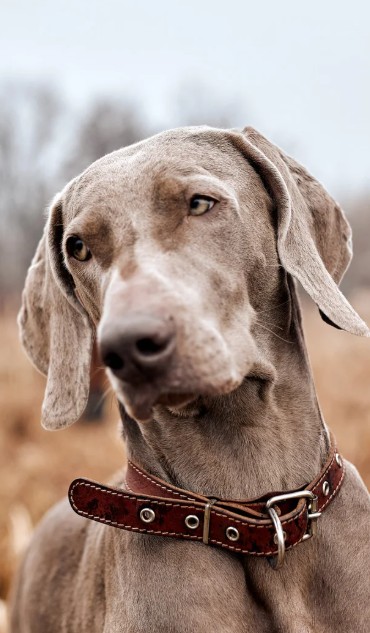
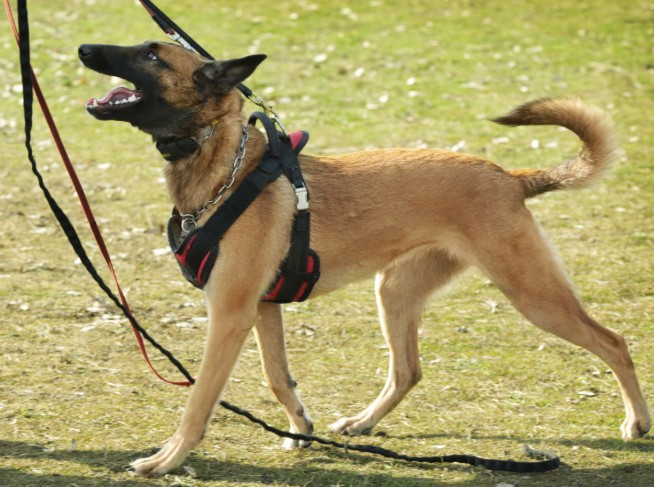
Strength with devotion. Whether pulling sleds across tundra or guiding a handler through a busy street, working dogs combine physical power with emotional connection, making them not just helpers but trusted partners in the deepest sense.
Practical Training Exercises: At-Home Training Protocols
Foundation Exercises: Building Drive and Focus
The Engagement Game (8 weeks and up)
Your journey into working dog training begins with teaching your dog that you’re the source of all good things. This foundational exercise builds the attention and handler focus essential for all advanced training.
Step-by-step process:
- Start in a boring environment (empty room or quiet yard)
- Have high-value treats or a favorite toy hidden in your pocket
- Ignore your dog completely—no eye contact, no talking
- The moment your dog looks at you, mark with “yes!” and reward
- Toss the reward away from you, resetting the exercise
- Wait for your dog to return and offer eye contact again
- Gradually increase the duration of eye contact before rewarding
- Add distractions slowly—practice in different locations
You’ll know you’re succeeding when your dog automatically “checks in” with you in new environments. This foundation creates a dog who looks to you for guidance rather than making independent decisions—crucial for working dogs who must respond reliably to handler direction.
Building Toy Drive (10 weeks and up)
Not all dogs naturally play with toys, but toy drive can be developed and is invaluable for training. Toys provide rewards that don’t fill up your dog’s stomach and can be delivered at a distance.
The “two toy game” builds enthusiasm and teaching release:
- Have two identical toys (tennis balls, tugs, or squeaky toys)
- Get your dog excited about toy #1—wiggle it, make prey-like movements
- When they grab it, celebrate briefly (3 seconds), then freeze
- Produce toy #2 and make it “come alive” with movement
- Most dogs will drop toy #1 to get the “better” moving toy
- As they drop, say “out” or “drop”—naming the behavior
- Immediately engage with toy #2, then repeat the cycle
This game teaches your dog that releasing items brings more play, not ending the fun. You’re building both drive and control simultaneously—the hallmark of good working dog training.
Scent Work Games: Developing Detection Skills
Container Search (12 weeks and up)
This exercise introduces your dog to using their nose for problem-solving, laying groundwork for any detection work. You don’t need expensive equipment—just household items and your dog’s regular food.
Setting up the search:
- Gather 6-10 cardboard boxes or plastic containers
- Place them in a line with 2-3 feet between each
- Put a few pieces of your dog’s food in ONE container
- Keep containers at nose height—use chairs for small dogs
Training progression:
- Week 1-2: Let your dog watch you place food. Release with “find it!” Celebrate when they locate the correct container
- Week 3-4: Place food while your dog waits in another room. Gradually increase difficulty by using similar-smelling containers
- Week 5-6: Add a specific scent (birch essential oil is standard for sport detection). Pair it with food initially
- Week 7-8: Fade the food, rewarding only for finding the target scent
Watch for behavior changes when your dog catches the target odor—sudden head snap, intense sniffing, or freezing. These are natural “alerts” you can shape into formal indications.
The Shell Game Advanced (4 months and up)
This classic game develops problem-solving and scent discrimination while maintaining fun engagement.
Advanced progression:
- Start with three cups, treat visible under one
- Slowly slide cups to switch positions while dog watches
- Dog must indicate correct cup (paw, nose touch, or stare)
- Increase to shuffling cups without dog seeing final position
- Add identical treats under ALL cups except one—dog must find the DIFFERENT scent
- Graduate to finding specific scents (your scent on one cup vs. clean cups)
Problem-solving checkpoint: If your dog guesses randomly, you’re moving too fast. Return to earlier steps and build confidence. Some dogs need weeks at each level—patience creates precision.
Age-Appropriate Training Timeline
8-16 Weeks: Critical Socialization Period
Your puppy’s brain is most receptive to new experiences during this window. Focus on exposure, not expertise.
Daily goals:
- 3 new surfaces to walk on (grass, gravel, metal, wood)
- 2 new sounds (recordings of sirens, thunder, fireworks at low volume)
- 5 new people (different ages, appearances, mobility aids)
- 1 new environment (pet store, friend’s house, outdoor café)
- Basic marker training (“yes” = reward coming)
- Name recognition and recall games
- Gentle restraint acceptance (collar holds, paw touches)
Training sessions: 3-5 minutes, 5-6 times daily. Puppies have tiny attention spans—end while they still want more.
4-6 Months: Skill Building Phase
Adolescence begins around 5 months, bringing decreased attention and increased independence. Structure becomes crucial.
Training priorities:
- Impulse control exercises (wait, leave it, stay)
- Basic obedience with distractions (sit/down/come in various locations)
- Introduction to specific working behaviors (retrieving, alerting, searching)
- Leash manners and public access preparation
- Crate training for extended periods
Common adolescent challenges: Your teenage dog might “forget” known behaviors. This is normal! Maintain consistency, reduce distractions temporarily, and celebrate small successes. Many owners give up during this phase—persistence pays off.
6-12 Months: Specialization Introduction
This period determines whether your dog has working potential for specific tasks. Not every dog will excel—that’s okay!
Specialized foundation work:
- For detection: Advanced scent puzzles, multiple hide searches, various environments
- For protection: Controlled tug play, bark on command, impulse control around triggers
- For service work: Task training (retrieve items, open doors, medical alerts)
- For SAR: Runaway games, finding hidden people, beginning track aging
Training intensity: 15-20 minute focused sessions, 2-3 times daily, plus integrated training throughout the day.
12-24 Months: Professional Development
Your young adult dog can now handle longer training sessions and complex concepts. This is when working dogs typically enter formal programs.
Advanced concepts:
- Behavior chains (multiple commands in sequence)
- Discrimination tasks (choose correct item from many options)
- Distance control (responding to commands 50+ feet away)
- Proofing against distractions (maintaining focus despite environment)
- Duration work (holding positions for extended periods)
Problem-Solving Guide for Common Working Breed Issues
Excessive Energy and Destructiveness
You’re dealing with a dog bred for 8-hour workdays who’s getting 30-minute walks. The solution isn’t always more exercise—it’s better exercise.
Strategic energy management:
- Morning training session BEFORE breakfast (hungry dogs focus better)
- Puzzle feeders for all meals—make them work for food
- “Sniffari” walks—let them investigate rather than march
- Evening training or play session before bed
- Rotate activities to prevent boredom—agility Monday, nosework Tuesday, etc.
The “Nothing for Free” protocol: Your dog must perform a behavior before receiving anything valuable—food, toys, attention, access to outdoors. This provides hundreds of mini-training sessions daily without formal structure.
Obsessive Behaviors and Fixations
Working breeds can develop unhealthy fixations—shadow chasing, light obsession, excessive herding of family members. These stem from frustrated working drive.
Interruption and redirection protocol:
- Identify early warning signs (staring, stalking posture, whining)
- Interrupt BEFORE full fixation with incompatible behavior
- Redirect to appropriate outlet (toy, training exercise)
- Reward heavily for choosing the alternative
- Management—prevent access to triggers when unsupervised
Case study: A Border Collie obsessed with car chasing learned to “herd” soccer balls instead. The key was providing an outlet that satisfied the same drive in a safe, controlled way. Within six weeks, the dog would ignore passing cars in favor of his ball—same genetic need, different expression.
Lack of Focus or Motivation
Sometimes working breeds seem disinterested in training. This usually indicates one of three issues: unclear communication, low-value rewards, or medical problems.
Diagnostic approach:
- Health check—rule out pain, vision, or hearing issues
- Evaluate rewards—is your food boring? Try cheese, liver, or play rewards
- Assess environment—too many distractions? Start somewhere boring
- Check your energy—dogs mirror handler enthusiasm
- Simplify criteria—are you asking for too much too soon?
Building motivation in “shut down” dogs: Some working dogs become overwhelmed and stop trying. Use “shaping”—reward tiny movements toward the goal. A dog who won’t retrieve might first get rewarded just for looking at the toy, then touching it, then mouthing it. Patience and observation reveal what the dog IS willing to offer. 🧡

Mental Stimulation Activities for Working Breeds in Pet Homes
DIY Enrichment Solutions
Your working dog needs mental challenges even on days when physical exercise is limited. These activities can tire a dog more effectively than a long walk.
The “Find It” meal protocol:
- Scatter kibble in grass—dogs spend 20 minutes “hunting” breakfast
- Hide portions around the house—behind furniture, on stairs, in boxes
- Use toilet paper rolls as treat dispensers—fold ends with food inside
- Create “snuffle mats” from fleece strips—hide food in fabric forest
- Freeze meals in Kong toys with layers—extends feeding to 30+ minutes
Rotating puzzle stations: Set up 3-4 different challenges around your home. Your dog works through each station, preventing boredom and maintaining engagement. Examples: puzzle feeder in kitchen, hidden toys in living room, scent work in bedroom, frozen lickmat on porch.
Indoor Training Games for Bad Weather
Working breeds don’t take snow days—neither should their training. These indoor exercises maintain conditioning when outdoor work isn’t possible.
“Room to room recalls”: Family members in different rooms call the dog back and forth. Increases to running up/down stairs, around obstacles, building speed and enthusiasm. Burns energy while practicing essential recall skills.
“Hide and seek” variations:
- Basic: One person hides while another holds dog, then releases to “find”
- Advanced: Hide objects dog must retrieve in order
- Expert: Multiple hidden items, dog indicates each without retrieving
“Parkour in place”: Teach your dog to interact with household items—two paws on ottoman, circle the coffee table, under the dining table, over the couch arm. Builds body awareness and provides physical exercise in limited space.
Remember, mental exercise often exhausts working dogs more than physical activity alone. A 20-minute training session can equal a 2-hour walk in terms of satisfaction and fatigue. The key is consistency—these dogs thrive on routine and clear expectations. Your investment in proper training and enrichment will reward you with a fulfilled, well-adjusted working dog who enhances rather than complicates your life.
Performance & Activities: Dogs at Work
Military and Law Enforcement Operations
When you see a military working dog in action, you’re witnessing one of the most sophisticated human-animal partnerships in existence. These dogs undergo training that would challenge many human soldiers. At Lackland Air Force Base, where approximately 900 dogs train at any given time, the curriculum includes everything from basic obedience to complex tactical scenarios.
The dual-purpose dog concept has revolutionized military and police canine programs. These versatile animals train in both detection and patrol work, allowing a single dog-handler team to fulfill multiple operational needs. A dual-purpose dog might start their shift detecting narcotics at a checkpoint, then switch to patrol mode for building searches or suspect apprehension.
Tactical deployment requires split-second decision-making from both dog and handler. These teams train for scenarios including hostile crowd control, building clearance, and pursuit of armed suspects. The dogs learn to distinguish between aggressive actions requiring intervention and normal civilian behavior. This discrimination ability prevents unnecessary engagements while ensuring rapid response when truly needed.
Search and Rescue: Heroes in Disasters
Search and rescue (SAR) dogs represent hope in humanity’s darkest moments. Whether searching for survivors in earthquake rubble or tracking lost hikers in wilderness areas, these dogs combine extraordinary scenting ability with incredible determination. The typical SAR dog requires about 600 hours of training before being considered field-ready—that’s equivalent to 15 weeks of full-time work!
Air scenting versus tracking represents two distinct search methodologies. Air-scenting dogs work with their heads up, detecting human scent particles carried by wind currents. They can locate victims buried under snow or debris where no ground track exists. Tracking dogs, conversely, follow the specific scent trail left by an individual, useful for finding wandering Alzheimer’s patients or lost children who’ve walked away from a known location.
The psychological toll on SAR dogs often goes unrecognized. These dogs can become frustrated or depressed when finding only deceased victims. Experienced handlers combat this by staging “live finds” with volunteers, allowing their dogs to experience success and maintain motivation. After 9/11, handlers noticed their dogs becoming increasingly stressed from finding no survivors, leading to the practice of planting live “victims” for dogs to discover.
Service and Assistance Roles
The impact of service dogs on individuals with disabilities cannot be overstated. These dogs provide not just practical assistance but also emotional support and increased independence. You might see a service dog performing obvious tasks like guiding someone across a street, but many of their most valuable services are nearly invisible to casual observers.
Medical alert dogs demonstrate almost supernatural abilities, detecting oncoming seizures, dangerous blood sugar changes, or even certain cancers through scent. Scientists believe these dogs detect volatile organic compounds released by the human body during medical events. Some dogs can alert to seizures up to 45 minutes before onset, giving their handlers time to reach safety or take medication.
Psychiatric service dogs help veterans and others manage PTSD, anxiety, and depression through specific trained tasks. They might perform deep pressure therapy during panic attacks, create physical barriers in crowded spaces, or perform room searches to help handlers feel secure. These aren’t emotional support animals (which provide comfort through companionship)—they’re highly trained working dogs performing specific medical tasks.
Lifestyle & Environment: Creating Optimal Conditions
Housing and Kennel Management
Your working dog’s living environment profoundly impacts their performance and welfare. While many imagine working dogs living in sterile kennels, the reality is more nuanced. The best programs recognize that dogs need environmental enrichment, social interaction, and comfortable spaces to truly thrive.
Kennel design has evolved significantly from the barren, isolating spaces of the past. Modern facilities incorporate climate control, sound dampening, and even music therapy. Research shows that dogs exposed to classical music show lower stress indicators than those in silent environments. Some progressive programs have replaced traditional kennels with home-fostering programs, where dogs live with volunteer families when off-duty.
The importance of environmental complexity cannot be understated. Dogs need mental stimulation even during rest periods. Puzzle feeders, rotating toys, and varied textures in living spaces all contribute to psychological well-being. A bored working dog can develop destructive behaviors or lose their edge for work. Smart handlers create environments that challenge and engage their dogs even during downtime.
Work-Life Balance for Working Dogs
You might assume working dogs are constantly on duty, but successful programs understand the importance of downtime. Just like human athletes need recovery periods, working dogs require time to simply be dogs—playing, exploring, and relaxing without performance pressure.
The concept of “decompression time” is crucial for maintaining long-term performance. After intense working periods, dogs need opportunities to engage in natural behaviors like sniffing, playing, and socializing. Some handlers schedule regular “dog days” where their partners can run freely, swim, or play with other dogs without any work expectations.
Retirement planning begins from day one in responsible working dog programs. These dogs typically retire between 8-10 years old, though some continue working into their early teens if health permits. The transition from working dog to pet can be challenging—imagine going from a high-powered career to sudden retirement! Progressive programs now include gradual retirement phases, slowly reducing workload while introducing more leisure activities. 🐾
Senior Care: Honoring Veteran Working Dogs
The Transition to Retirement
When a working dog’s career ends, a new chapter begins—one that requires just as much attention and care as their working years. You might think retirement would be easy for these dogs, but the transition can be surprisingly challenging. Dogs who’ve spent their entire lives with a clear purpose and routine can experience anxiety or depression when that structure disappears.
Gradual retirement protocols help ease this transition. Rather than abruptly ending all work, handlers might reduce their dog’s duties over several months. A detection dog might move from active searching to demonstration work with schools, maintaining their sense of purpose while reducing physical demands. This graduated approach helps both dog and handler adjust emotionally to the change.
Physical rehabilitation becomes increasingly important as working dogs age. Years of intense physical activity often leave these dogs with arthritis, muscle atrophy, or chronic injuries. Modern veterinary care includes therapies once reserved for human athletes: underwater treadmills, acupuncture, massage therapy, and even stem cell treatments. These interventions can dramatically improve quality of life for retired working dogs.
Legal and Ethical Considerations
The evolution of legal protections for working dogs reflects our growing understanding of their value and sentience. While historically military dogs were classified as “equipment” and often euthanized after service, modern laws recognize these animals as deserving of care and protection.
The development of adoption programs represents a major ethical advancement. Today, military and police dogs are typically offered for adoption to their handlers first, then to qualified civilian homes. These programs acknowledge that working dogs deserve comfortable retirements after their years of service. However, adoption isn’t always straightforward—some dogs require experienced handlers due to their training or temperament.
Ethical debates continue around the use of animals in dangerous work. Critics argue that dogs cannot consent to military or police service and shouldn’t be exposed to life-threatening situations. Advocates counter that these dogs are fulfilling their genetic purpose and that proper training and care minimize risks. The conversation reflects broader societal questions about our relationship with animals and our responsibilities toward them.
The Future of Working Dogs: Innovation and Evolution
Technological Integration and Enhancement
The future of working dogs isn’t about replacement by technology—it’s about enhancement and integration. You might imagine robots replacing detection dogs, but the reality is that biological and technological systems work best in partnership. Dogs’ olfactory capabilities still far exceed any artificial sensor, while technology can help interpret and communicate their findings.
Wearable technology for working dogs is revolutionizing how we understand and support these animals. GPS trackers help coordinate search patterns, while biometric sensors monitor heart rate, temperature, and stress indicators in real-time. Some military units use cameras mounted on dogs’ vests, allowing handlers to see what their dogs see during building clearances or searches.
Genetic research promises to revolutionize breeding programs. Scientists have identified genetic markers associated with successful working traits, potentially allowing breeders to select for specific capabilities. However, this raises ethical questions about genetic manipulation and the importance of maintaining genetic diversity. The goal isn’t to create “super dogs” but to increase the likelihood that puppies will have the temperament and abilities needed for their intended work.
Expanding Roles in Healthcare and Conservation
Working dogs continue to find new applications in unexpected fields. Medical detection dogs now screen for various cancers, Parkinson’s disease, and even COVID-19, often with accuracy rates exceeding laboratory tests. You might soon encounter these dogs in medical facilities, providing rapid, non-invasive screening for various conditions.
Conservation work represents an exciting frontier for working dogs. These eco-dogs locate endangered species scat for population studies, detect invasive species before they become established, and even help prevent wildlife trafficking at ports and airports. Their work provides crucial data for conservation efforts while minimizing disturbance to sensitive ecosystems.
The role of working dogs in mental health support continues to expand beyond traditional service applications. Facility dogs now work in courtrooms, helping child witnesses feel safe while testifying. Therapy dogs visit hospitals, schools, and disaster sites, providing comfort and stress relief. These applications recognize the profound psychological benefits of human-animal interaction.
Conclusion: Is a Working Dog Right for You?
Understanding the Commitment
If you’re considering adding a working breed to your family, understanding their needs is crucial. These dogs don’t just want to work—they need to work. A Border Collie without a job might redesign your garden through unauthorized excavation projects. A Belgian Malinois without adequate mental stimulation could redirect their drive toward less constructive activities. You must be prepared to provide not just exercise but purposeful activity that engages their minds and satisfies their genetic programming.
The financial investment in a working dog extends far beyond initial purchase price. Professional training can cost thousands of dollars, while maintaining optimal health for these athletic dogs requires premium nutrition, regular veterinary care, and potentially expensive treatments for work-related injuries. Factor in equipment, insurance, and possible property modifications to accommodate your working partner.
Time commitment represents perhaps the greatest investment. Working dogs need hours of daily interaction, training, and activity. This isn’t a pet you can leave alone for long workdays—these dogs require engaged, present partners who can match their energy and dedication. The reward? A partnership unlike any other, where two species work together toward common goals with trust, respect, and deep mutual affection.
The Broader Impact
Working dogs contribute immeasurably to human society. They save lives, provide independence to people with disabilities, protect our communities, and advance scientific research. The economic value of working dogs reaches billions of dollars annually, but their true worth transcends monetary calculation. They represent the best of what’s possible when humans and animals work together.
Supporting working dog programs doesn’t require owning one yourself. Many organizations need volunteer puppy raisers, financial supporters, or advocates. You might help socialize future service dogs, support retired military dog adoptions, or donate to organizations training dogs for veterans with PTSD. Every contribution helps maintain and expand these vital programs.
As we look toward the future, working dogs will undoubtedly continue evolving alongside human needs. New challenges will require new solutions, and dogs will adapt as they always have—with dedication, courage, and unwavering loyalty. The partnership between humans and working dogs, forged over millennia, remains one of nature’s most successful collaborations. Whether detecting disease, finding survivors, or providing independence to those with disabilities, these remarkable animals remind us daily of what’s possible when two species work together in trust and mutual respect. 🧡
The story of working dogs is far from over. As our understanding of canine capabilities grows and our societies face new challenges, these four-legged partners will continue to serve, protect, and inspire. They ask for little in return—good care, purposeful work, and the companionship of their human partners. In exchange, they offer everything they have: their strength, their senses, their intelligence, and their hearts. The least we can do is ensure they receive the respect, care, and appreciation they so richly deserve.

